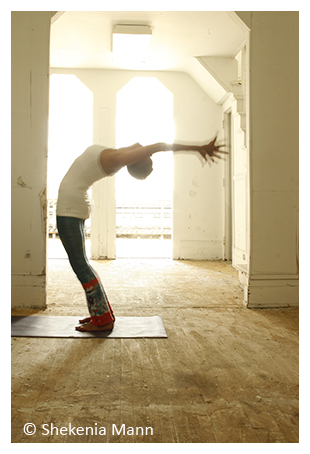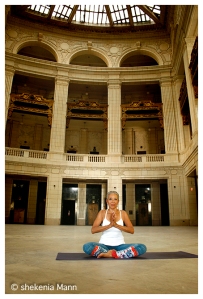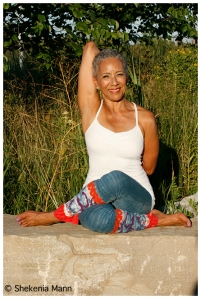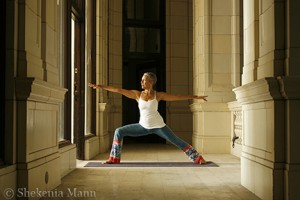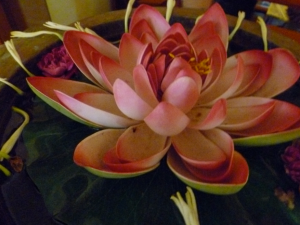“The day will come when after harnessing space, the winds, the tides, and gravitation, we shall harness for God the energies of love. And on that day, for the second time in the history of the world, we shall have discovered fire.” — Teilhard De Chardin
 In addition to a daily meditation practice, one of the ways I practice peace of mind is by contemplating and meditating on wisdom that inspires me that others have shared. I especially enjoy these contemplations during the winter months when introspection seems to come more naturally. As the sun snuggles beneath her blanket of clouds to take her long winter’s nap it seems easy to turn within and contemplate the wisdom, that like a cup of comfort, soothes and calms. When I lose my way, when I become uncertain, when I become fearful, or despairing, these are words of wisdom that help me regain perspective and support me in being peaceful and serene.
In addition to a daily meditation practice, one of the ways I practice peace of mind is by contemplating and meditating on wisdom that inspires me that others have shared. I especially enjoy these contemplations during the winter months when introspection seems to come more naturally. As the sun snuggles beneath her blanket of clouds to take her long winter’s nap it seems easy to turn within and contemplate the wisdom, that like a cup of comfort, soothes and calms. When I lose my way, when I become uncertain, when I become fearful, or despairing, these are words of wisdom that help me regain perspective and support me in being peaceful and serene.
As we enter a new year, I hope some of the timeless wisdom that has touched my life can offer you comfort when you need it most. Snippets from 2014 blog posts end with links to the original full post, should you care to read more.
ON LOVE
Peace of mind is not just a state of mind. It doesn’t happen automatically. It requires focused attention, commitment, and practice. It requires the 3 D’s – determination, dedication, and devotion. It means organizing and concentrating the unruly forces of the mind, sometimes referred to as monkey mind, on what can bring us peace instead of conflict. This means shifting our focus from an external to an internal perspective and contemplating peaceful responses to people, situations, and circumstances. READ MORE
ON HAPPINESS
 Many of us think we have no control over our minds, but this is only because we have been taught to believe this is so. In fact, we are capable of controlling each and every thought we have. When we can’t change anything else, we can choose to change our minds. The key to happiness lies in cultivating practices that strengthen your innate capacity to create your own happiness whether or not you actually get what you want. READ MORE
Many of us think we have no control over our minds, but this is only because we have been taught to believe this is so. In fact, we are capable of controlling each and every thought we have. When we can’t change anything else, we can choose to change our minds. The key to happiness lies in cultivating practices that strengthen your innate capacity to create your own happiness whether or not you actually get what you want. READ MORE
ON PRIORITIES
Putting yourself first is not the same as being selfish. Putting yourself first is practical. Take a moment each day to treat yourself as if you are important. Learn to say yes to yourself, and make something you need or want a priority. READ MORE
ON LIFE
What happens when the peace you experience on your yoga mat is disrupted by life’s ins and outs, its ups and downs? How do you take your yoga off the mat and make it a way of life? One way is to practice accepting reality as it is, not the way you want it to be. Sometimes reality makes us feel uncomfortable or frustrated. Life doesn’t always go according to our plan. When we get bad news or fall on hard times, we naturally wish the situation were different. Our unwillingness to face the situation head on, not the situation itself, is what causes us to suffer. READ MORE
ON FORGIVENESS
Forgiveness doesn’t happen all at once. It is a process that requires regular and consistent practice. If you are having difficulty forgiving someone who you feel has wronged you, start the process by forgiving yourself. READ MORE
ON GRATITUDE
 The more grateful you are, the more joyful you become. You become more joyful for yourself, and for the good fortune of others. You find that you can be happy for the people you love, for bright blue skies, warm sunshine, the scent of flowers in bloom, the soft caress of cool breezes blowing–even for your own breath. Instead of feeling guilty about your own good fortune, you become able to embrace pleasure even when you are aware of the suffering of others. The more grateful you become, the happier you feel for no apparent reason. You simply love life and enjoy being alive. READ MORE
The more grateful you are, the more joyful you become. You become more joyful for yourself, and for the good fortune of others. You find that you can be happy for the people you love, for bright blue skies, warm sunshine, the scent of flowers in bloom, the soft caress of cool breezes blowing–even for your own breath. Instead of feeling guilty about your own good fortune, you become able to embrace pleasure even when you are aware of the suffering of others. The more grateful you become, the happier you feel for no apparent reason. You simply love life and enjoy being alive. READ MORE
ON RELATIONSHIPS
Yoga stresses that we live in a world of reciprocity in our relationships. We must be able to interact with others who approach life from a value and belief system different than our own. As yogins and yoginis, our work is to stress the universal connection between each and every one of us, while acknowledging, celebrating, and honoring our cultural realities, and by engaging in dialogue that fosters mutual understanding and encourages compassion. READ MORE
ON COMMUNITY
 Each one of us is a gift like a flower that emerges. Our yoga is to engage with our gifts and our experiences and then share them. When drawn together, all our experiences, gifts and talents become the opportunity for evolution and growth. In sharing our gifts and our experiences, we nourish what is greater than ourselves, the community. In this process of sharing we discover and strengthen our connection to each other. We don’t have to deny difference to keep from demonizing it. Our differences are part of what make us unique. But while we have different interests and backgrounds, we share a common humanity. Acknowledging differences does not have to divide us; in fact, acknowledging our differences can help us develop closer bonds through mutual understanding and respect. READ MORE
Each one of us is a gift like a flower that emerges. Our yoga is to engage with our gifts and our experiences and then share them. When drawn together, all our experiences, gifts and talents become the opportunity for evolution and growth. In sharing our gifts and our experiences, we nourish what is greater than ourselves, the community. In this process of sharing we discover and strengthen our connection to each other. We don’t have to deny difference to keep from demonizing it. Our differences are part of what make us unique. But while we have different interests and backgrounds, we share a common humanity. Acknowledging differences does not have to divide us; in fact, acknowledging our differences can help us develop closer bonds through mutual understanding and respect. READ MORE
ON STILLNESS
Sometimes being still is the most powerful thing we can do. Rather than acting on the advice, “Don’t just sit there, do something!,” we are better off taking the advice, “Don’t just do something, sit there!” That’s when we discover just because we aren’t doing something, it doesn’t mean there’s nothing happening.
We live in a culture that places more value on doing than on being. We attach our worth to our accomplishments. We value how much we do, and how busy we are, more than what we do or how we do it. We miss the point that sometimes doing nothing is more powerful and productive than anything you can do in a situation. But being still is an art that requires practice. It’s easier said than done. READ MORE
ON GIVING
 The impulse of love that flows through the heart is what moves us to give. So when you feel moved to give, do it. Don’t stop the pure flow of love in your heart. Holding back the desire to give is painful. Give all you have to each moment, holding nothing back. When you give, you are in alignment with the flow of life itself. READ MORE
The impulse of love that flows through the heart is what moves us to give. So when you feel moved to give, do it. Don’t stop the pure flow of love in your heart. Holding back the desire to give is painful. Give all you have to each moment, holding nothing back. When you give, you are in alignment with the flow of life itself. READ MORE
“It is not differences that immobilize us, but silence…And there are so many silences to be broken.” Audre Lorde
Namaste

